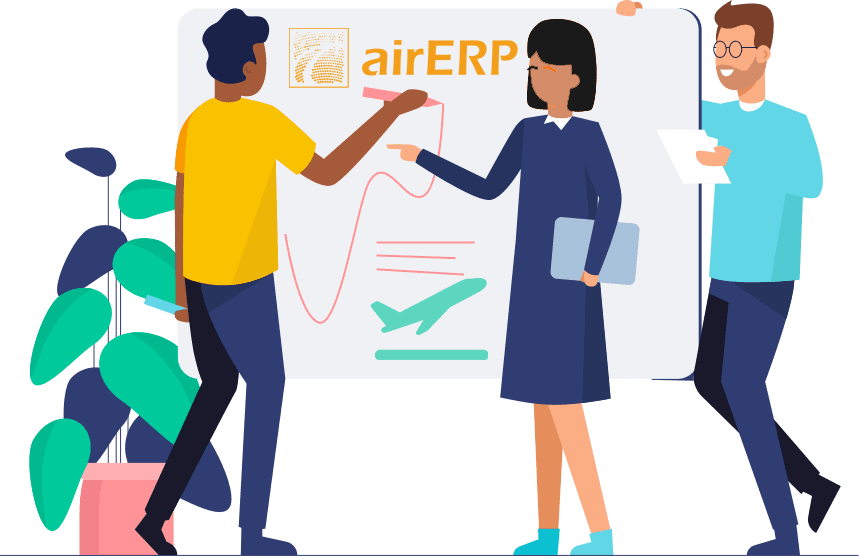Airline Management made easier
We have designed airERP to help aircraft owners, operators, and maintenance providers manage various aspects of aircraft operations, maintenance, and compliance.
Aircraft Records Management
Maintain comprehensive records of aircraft maintenance, inspections, repairs, and modifications to ensure compliance with regulatory requirements.
Maintenance Scheduling
Schedule and track aircraft maintenance tasks based on operating hours, calendar time, and other factors to ensure the aircraft remains airworthy.
Parts Inventory Management
Manage inventory of aircraft parts and supplies, including ordering, stocking, and tracking of parts usage and availability.
airERP Modules
Check The Features

Aircraft Records Management
Aircraft records management is a crucial aspect of aircraft maintenance and operation. It involves maintaining and organizing records related to the maintenance, repairs, inspections, and modifications of an aircraft. Here are some key aspects of aircraft records management:
- Maintenance Records
- Airworthiness Directives (ADs) and Service Bulletins
- Inspection Records
- Component Tracking
Overall, effective aircraft records management is essential for ensuring the safety, airworthiness, and regulatory compliance of an aircraft. It helps aircraft operators track maintenance activities, identify trends, and make informed decisions regarding the maintenance and operation of their aircraft.

Component Tracking
Aircraft records should include details of all major components and their maintenance history. This helps track the life cycle of components and ensure that they are replaced or overhauled as necessary.
Each aircraft component is assigned a unique identifier, such as a part number or serial number, which is used to track the component throughout its lifecycle.
Some aircraft components have a limited lifespan and must be replaced after a certain number of flight hours, cycles, or calendar time. Component tracking helps monitor the usage of these parts and schedule replacements as necessary.

Aircraft Propellers or Rotors
Aircraft propellers or rotors are essential components of propeller-driven and rotorcraft aircraft, respectively. These components are responsible for generating thrust and enabling the aircraft to move through the air. Here are some key aspects of aircraft propellers and rotors:
- Propellers are typically used on piston-powered aircraft and some turboprop aircraft, while rotors are used on helicopters and other rotorcraft.
- The primary function of aircraft propellers and rotors is to convert engine power into thrust. Propellers create forward thrust by accelerating a large mass of air backwards, according to Newton's third law of motion. Rotors create lift and thrust by generating airflow over the rotor blades.
- Aircraft propellers consist of multiple blades attached to a central hub, which is connected to the engine. Helicopter rotors also consist of multiple blades attached to a central hub, but they are typically more complex in design to allow for vertical takeoff and landing (VTOL) and hovering.
Overall, aircraft propellers and rotors play a vital role in the operation of propeller-driven and rotorcraft aircraft. Proper maintenance and operation of these components are essential for safe and efficient flight.

CrewMan™
Revolutionizing Crew Management by Seamlessly Aligning Duty and Flight Times with Industry and Regulatory Standards:
- Acurately calculate Duty time and Crew hours.
- Intergrated fatigue management systems with AI.
- Advanced crew incentive system.
Contact
Contact Us
Location:
I&M, Wilson Airport,Kenya
Email:
info@airerp.com
Call:
+254 777 555 333
